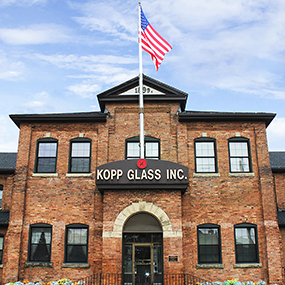 Looking back on 2015, it was a significant year for the lighting and photonics community; it was the year that the world celebrated light. Launched at the start of 2015, the International Year of Light (IYL) was a celebration of light and light-based technologies across the world.
Looking back on 2015, it was a significant year for the lighting and photonics community; it was the year that the world celebrated light. Launched at the start of 2015, the International Year of Light (IYL) was a celebration of light and light-based technologies across the world.
One of the main objectives of the IYL was to improve the public’s understanding of the central role that light plays in the modern world. Similarly, our goal in publishing this blog has been to share information about the fundamentals of glass and its interaction with light. To conclude 2015 and the first year of our blog, this article shares research and technologies that have made an impact in 2015 and promise to set a new course for the future.
LED Technology and Research Advancements
The rate of LED adoption continues to accelerate, but several obstacles remain before widespread adoption is realized, including lower costs and performance issues. Researchers continue to explore ways to improve the manufacturability of LEDs and seek to develop methods that lower their costs. At Florida State University, researchers developed a new highly efficient and low-cost method to produce LEDs based on a single-layer technique that combines organic and inorganic materials. Other researchers took a more novel approach and developed a manufacturing method that creates LEDs from food and beverage waste.
On-going research strives to improve the efficiency, reliability, and performance of LEDs. The material composition of an LED determines not only the cost of the LED but its actual performance. White LEDs are typically composed of a gallium nitride material with phosphor; however, other materials are being investigated that could lead to higher-performing LEDs. For instance, in 2015 researchers demonstrated the first color-tunable LED made from graphene. Conventional colored LEDs only emit narrow bands of light, which is determined by their composition and manufacturing. Graphene-based LEDs could be tuned to emit any color in the visible spectrum, creating a promising but still nascent technology.
Growth of Light-based Technologies and Applications
As LED technology advances, new applications for LED-based technologies also emerge, which were previously unachievable with traditional light sources. For example, an NUS study showed the potential of blue LEDs as a novel chemical-free food preservation method.
Light-based technologies power the manufacturing world; precision laser systems, robotics, machine vision systems, and advanced sensor and inspection systems enable ever-increasing levels of quality and efficiency. The way we communicate is also rapidly evolving: Li-Fi technology promises much faster and more secure data transfer; faster computers are being developed that use light to store and transmit data; and the Internet of Things requires the progression of increased connectivity. Photonics enables all of these technologies. Listed below are several articles that share research that is helping to change and improve the way we communicate.
- Green light generation from a silicon nanoplasmonic waveguide
- Novel laser diode technology for free-space communications
- ASU researchers demonstrate the world's first white lasers
- Li-Fi has just been tested in the real world, and it's 100 times faster than Wi-Fi
- Stanford breakthrough heralds super-efficient light-based computers
- Light-based memory chip is the first ever to store data permanently
Light-based technologies are not limited to communications and computing; the use of light within the medical field is seeing significant achievements and breakthroughs. A new light-activated drug delivery system was developed to treat eye diseases. While another study focused on improving veteran’s health showed the benefits of red and near-infrared light therapy for repairing brain function. Laser pulses were also researched as a method to improve the accuracy of tumor detection. Light-based technologies continue to expand the capabilities of medicine.

